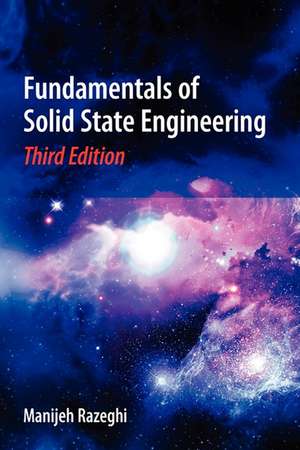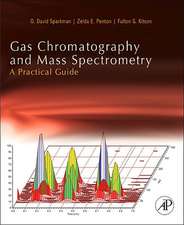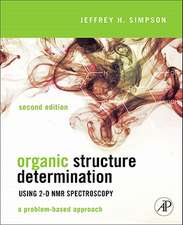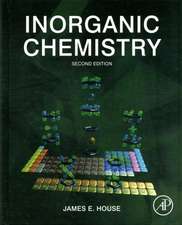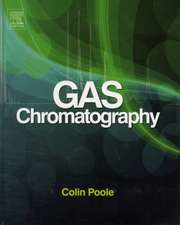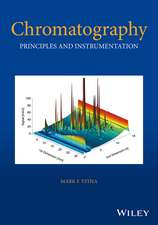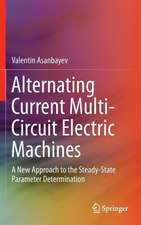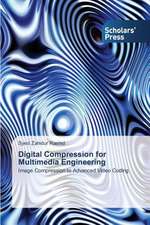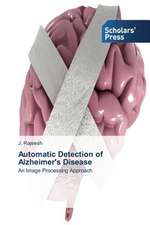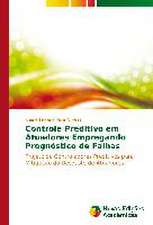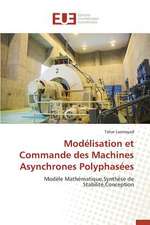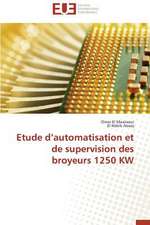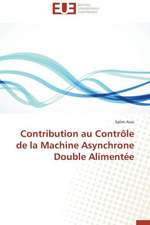Fundamentals of Solid State Engineering
Autor Manijeh Razeghien Limba Engleză Paperback – 4 noi 2010
Covers wide range of topics in the same style and in the same notation
Most up to date developments in semiconductor physics and nano-engineering
Mathematical derivations are carried through in detail with emphasis on clarity
Timely application areas such as biophotonics , bioelectronics
| Toate formatele și edițiile | Preț | Express |
|---|---|---|
| Paperback (2) | 512.36 lei 38-44 zile | |
| Springer Us – 4 noi 2010 | 512.36 lei 38-44 zile | |
| Springer International Publishing – 4 ian 2019 | 611.70 lei 38-44 zile | |
| Hardback (2) | 765.36 lei 38-44 zile | |
| Springer International Publishing – 3 sep 2018 | 765.36 lei 38-44 zile | |
| Springer Us – 27 mar 2009 | 919.74 lei 6-8 săpt. |
Preț: 512.36 lei
Preț vechi: 632.54 lei
-19% Nou
Puncte Express: 769
Preț estimativ în valută:
98.07€ • 106.56$ • 82.43£
98.07€ • 106.56$ • 82.43£
Carte tipărită la comandă
Livrare economică 17-23 aprilie
Preluare comenzi: 021 569.72.76
Specificații
ISBN-13: 9781441947123
ISBN-10: 1441947124
Pagini: 788
Dimensiuni: 155 x 235 x 41 mm
Greutate: 1.08 kg
Ediția:Softcover reprint of hardcover 3rd ed. 2009
Editura: Springer Us
Colecția Springer
Locul publicării:New York, NY, United States
ISBN-10: 1441947124
Pagini: 788
Dimensiuni: 155 x 235 x 41 mm
Greutate: 1.08 kg
Ediția:Softcover reprint of hardcover 3rd ed. 2009
Editura: Springer Us
Colecția Springer
Locul publicării:New York, NY, United States
Public țintă
GraduateDescriere
Fundamentals
of
Solid
State
Engineering,
3rd
Edition,
provides
a
multi-disciplinary
introduction
to
solid
state
engineering,
combining
concepts
from
physics,
chemistry,
electrical
engineering,
materials
science
and
mechanical
engineering.
Revised throughout, this third edition includes new topics such as electron-electron and electron-phonon interactions, in addition to the Kane effective mass method. A chapter devoted to quantum mechanics has been expanded to cover topics such as the harmonic oscillator, the hydrogen atom, the quantum mechanical description of angular momentum and the origin of spin. This textbook also features an improved transport theory description, which now goes beyond Drude theory, discussing the Boltzmann approach.
Introducing students to the rigorous quantum mechanical way of thinking about and formulating transport processes, this textbook presents the basic physics concepts and thorough treatment of semiconductor characterization technology, designed for solid state engineers.
Revised throughout, this third edition includes new topics such as electron-electron and electron-phonon interactions, in addition to the Kane effective mass method. A chapter devoted to quantum mechanics has been expanded to cover topics such as the harmonic oscillator, the hydrogen atom, the quantum mechanical description of angular momentum and the origin of spin. This textbook also features an improved transport theory description, which now goes beyond Drude theory, discussing the Boltzmann approach.
Introducing students to the rigorous quantum mechanical way of thinking about and formulating transport processes, this textbook presents the basic physics concepts and thorough treatment of semiconductor characterization technology, designed for solid state engineers.
Cuprins
Crystalline
Properties
of
Solids.-
Introduction.-
Crystal
lattices
and
the
seven
crystal
systems
.-
The
unit
cell
concept.-
Bravais
lattices
.-
Point
groups.-
Space
groups.-
Directions
and
planes
in
crystals:
Miller
indices.-
Real
crystal
structures.-
Summary.-
Further
reading.-
Problems.-
The
Reciprocal
Lattice.-
Introduction.-
Diffraction
by
a
crystal.-
Structure
factor.-
Atomic
form
factor.-
First
Brillouin
zone.-
Summary.-
References.-
Further
reading.-
Problems.-
Electronic
Structure
of
Atoms.-
Introduction.-
Spectroscopic
emission
lines
and
atomic
structure
of
hydrogen.-
Atomic
orbitals.-
Structures
of
atoms
with
many
electrons.-
Bonds
in
solids.-
Introduction
to
energy
bands.-
Summary.-
Further
reading.-
Problems.-
Introduction
to
Quantum
Mechanics.-
The
quantum
concepts.-
Elements
of
quantum
mechanics.-
Simple
quantum
mechanical
systems.-
Summary.-
Further
reading.-
Problems.-
Electrons
and
Energy
Band
Structures
in
Crystals.-
Introduction.-
Electrons
in
a
crystal.-
Band
structures
in
real
semiconductors.-
Band
structures
in
metals.-
Summary.-
References.-
Further
reading.-
Problems.-
Phonons.-
Introduction.-
Interaction
of
atoms
in
crystals:
origin
and
formalism.-
One-dimensional
monoatomic
harmonic
crystal.-
Sound
velocity.-
One-dimensional
diatomic
harmonic
crystal.-
Phonons.-
Summary.-
Further
reading.-
Problems.-
Thermal
Properties
of
Crystals.-
Introduction.-
Phonon
density
of
states
(Debye
model).-
Heat
capacity.-
Thermal
expansion.-
Summary.-
References.-
Further
reading.-
Problems.-
Equilibrium
Charge
Carrier
Statistics
in
Semiconductors.-
Introduction.-
Density
of
states.-
Effective
density
of
states
(conduction
band).-
Effective
density
of
states
(valence
band).-
Mass
action
law.-
Doping:
intrinsic
vs.
extrinsic
semiconductor.-
Charge
neutrality.-
Fermi
energy
as
a
function
of
temperature.-
Carrier
concentration
in
a
semiconductor.-
Summary.-
Further
reading.-
Problems.-
Non-Equilibrium
Electrical
Properties
of
Semiconductors.-
Introduction.-
Electrical
conductivity.-
Doping.-
Charge
carrier
diffusion.-
Carrier
generation
and
recombination
mechanisms.-
Summary.-
Further
reading.-
Problems.-
Semiconductor
Junctions.-
Introduction.-
Ideal
p-n
junction
at
equilibrium.-
Non-equilibrium
properties
of
p-n
junctions.-
Deviations
from
the
ideal
p-n
diode
case.-
Metal-semiconductor
junctions.-
Summary.-
Further
reading.-
Problems.-
Optical
Properties
of
Semiconductors.-
Introduction.-
Electron-photon
interaction.-
The
dielectric
permitivity
of
a
solid.-
Excitons.-
Phonon-photon
interaction.-
Plasmons.-
Electro-optical
properties.-
Electrons
in
a
magnetic
field.-
Nonlinear
optical
properties.-
Optical
properties
of
important
semiconductors.-
Summary.-
References.-
Further
reading.-
Problems.-
Low
Dimensional
Quantum
Structures.-
Introduction.-
two-dimensional
structures:
quantum
wells.-
One-dimensional
structures:
quantum
wires.-
Zero-dimensional
structures:
quantum
dots.-
Examples
of
low
dimensional
structures.-
Optical
properties
of
3D,
2D,
1D
and
0D
structures.-
Summary.-
References.-
Further
reading.-
Problems.-
Semiconductor
Heterostructures.-
Introduction.-
Energy
band
offsets.-
Type
I
alignment.-
Type
II
alignments.-
Summary.-
References.-
Further
reading.-
Problems.-
Compound
Semiconductors
and
Crystal
Growth
Techniques.-
Introduction.-
III-V
semiconductor
alloys.-
Bulk
single
crystal
growth
techniques.-
Epitaxial
growth
techniques.-
Summary.-
References.-
Further
reading.-
Problems.-
Silicon
and
Compound
Semiconductor
Device
Technology.-
Introduction.-
Oxidation
in
Silicon.-
Diffusion
of
dopants.-
Ion
implantation
of
dopants.-
Characterization
of
diffused
and
implanted
layers.-
Summary.-
References.-
Further
reading.-
Problems.-
Semiconductor
Chara
Recenzii
From
the
reviews
of
the
third
edition:“The
subject
area
of
solid
state
engineering
is
potentially
very
complex
…
.
Manijeh
Razeghi
takes
a
multi-disciplinary
approach
to
the
text
to
address
the
requirements
for
engineers
and
scientists
…
.
He
commendably
uses
illustrations
and
worked
examples
for
the
benefit
of
comprehension;
this
is
an
excellent
and
well-rounded
book.”
(Times
Higher
Education,
December,
2009)
Textul de pe ultima copertă
Fundamentals
of
Solid
State
Engineering,
3rd
Edition,
provides
a
multi-disciplinary
introduction
to
solid
state
engineering,
combining
concepts
from
physics,
chemistry,
electrical
engineering,
materials
science
and
mechanical
engineering.
Revised throughout, this third edition includes new topics such as electron-electron and electron-phonon interactions, in addition to the Kane effective mass method. A chapter devoted to quantum mechanics has been expanded to cover topics such as the harmonic oscillator, the hydrogen atom, the quantum mechanical description of angular momentum and the origin of spin. This textbook also features an improved transport theory description, which now goes beyond Drude theory, discussing the Boltzmann approach.
Introducing students to the rigorous quantum mechanical way of thinking about and formulating transport processes, this textbook presents the basic physics concepts and thorough treatment of semiconductor characterization technology, designed for solid state engineers.
Revised throughout, this third edition includes new topics such as electron-electron and electron-phonon interactions, in addition to the Kane effective mass method. A chapter devoted to quantum mechanics has been expanded to cover topics such as the harmonic oscillator, the hydrogen atom, the quantum mechanical description of angular momentum and the origin of spin. This textbook also features an improved transport theory description, which now goes beyond Drude theory, discussing the Boltzmann approach.
Introducing students to the rigorous quantum mechanical way of thinking about and formulating transport processes, this textbook presents the basic physics concepts and thorough treatment of semiconductor characterization technology, designed for solid state engineers.
Caracteristici
Provides
a
multidisciplinary
introduction
to
quantum
mechanics,
solid
state
physics,
advanced
devices,
and
fabrication
Covers wide range of topics in a standardized style and notation
Most up to date developments in semiconductor physics and nano-engineering
Mathematical derivations are carried through in detail with emphasis on clarity
Timely application areas such as biophotonics, bioelectronics
Covers wide range of topics in a standardized style and notation
Most up to date developments in semiconductor physics and nano-engineering
Mathematical derivations are carried through in detail with emphasis on clarity
Timely application areas such as biophotonics, bioelectronics
Notă biografică
Dr. Manijeh Razeghi is Walter P. Murphy Professor of Electrical Engineering and Computer Science and Director, Center for Quantum Devices at Northwestern University in Evanston, IL. She earned the Docteur d'État ès Sciences Physiques, Université de Paris, Paris, France; a Docteur 3ème Cycle Solid State Physics, Université de Paris, Paris, France; and a DEA Science des Matériaux, Université de Paris, Paris, France. Her research interests include quantum devices, compound semiconductor science and nanotechnology, the physics of new semiconductor crystals for novel applications and realizing advanced semiconductor devices such as lasers, photodetectors, transistors, waveguides and switches.
